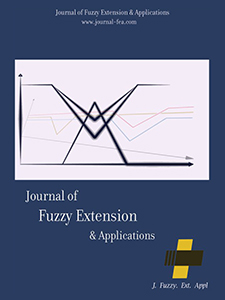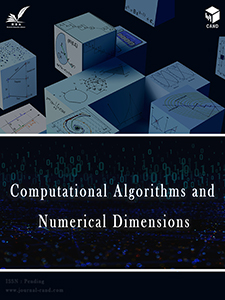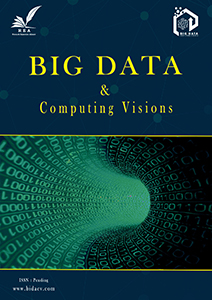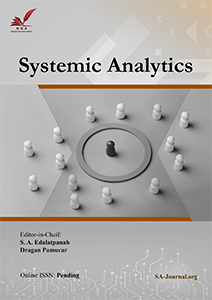Research on Improving the Financial Capacity of Farmers Based on Fuzzy Analytic Hierarchy Process
Keywords:
Fuzzy analytic hierarchy process, Financial capabilities, FarmersAbstract
This study uses the fuzzy analytic hierarchy process to deeply analyze the key factors that enhance the financial capabilities of farmers. The research results show that personal economic status is the dominant factor, with personal income, consumption, and savings becoming the core elements for enhancing financial capabilities. The importance of economic factors for the financial literacy of farmers is highlighted, providing a foundation for the formulation of targeted policies. Financial training and digital technology are also emphasized. The diversity of financial institutions is also seen as a key factor driving financial capabilities. Social factors have a relatively small impact on the research. Based on the comprehensive research results, it is proposed that the government should strengthen agricultural modernization, promote financial training and digital development, increase internet coverage, support diversified services of financial institutions, and encourage social capital investment to build a comprehensive policy framework to enhance the financial capabilities of farmers.
References
[1] Sherraden, M. S. (2010). Financial capability: What is it, and how can it be created? https://doi.org/10.7936/K7SX6CQX
[2] Yan, X. (2021). “Dividend” and “Gap” of rural digital inclusive finance. Economist, 2(5), 15–16.
[3] Demir, A., Pesqué Cela, V., Altunbas, Y., & Murinde, V. (2022). Fintech, financial inclusion and income inequality: a quantile regression approach. European journal of finance, 28(1), 86–107. DOI:10.1080/1351847X.2020.1772335
[4] Xiao, J. J. (2016). Consumer financial capability and wellbeing. Handbook of consumer finance research: second edition, 118, 3–17. DOI:10.1007/978-3-319-28887-1_1
[5] Lusardi, A. (2011). Americans’ financial capability.
[6] Atkinson, A., McKay, S., Collard, S., & Kempson, E. (2007). Levels of financial capability in the UK. Public money and management, 27(1), 29–36. DOI:10.1111/j.1467-9302.2007.00552.x
[7] Taylor, M., Jenkins, S., & Sacker, A. (2009). Financial capability and wellbeing: Evidence from the BHPS. Occasional papers in financial regulation, 34, 1–98. http://www.fsa.gov.uk/pubs/occpapers/op34.pdf
[8] Lusardi, A., & Mitchell, O. S. (2014). The economic importance of financial literacy: Theory and evidence. Journal of economic literature, 52(1), 5–44. DOI:10.1257/jel.52.1.5
[9] Chowa, G., Ansong, D., & Despard, M. R. (2014). Financial capabilities: Multilevel modeling of the impact of internal and external capabilities of rural households. Social work research, 38(1), 19–35. DOI:10.1093/swr/svu002
[10] Sakyi Nyarko, C., Ahmad, A. H., & Green, C. J. (2022). The Gender-differential effect of financial inclusion on household financial resilience. Journal of development studies, 58(4), 692–712. DOI:10.1080/00220388.2021.2013467
[11] Yin, Z., Jiang, J., & Yan, Y. (2021). Does the digital divide affect household income. Finance & trade economics, 42, 66–82.
[12] Ding, T., Li, Y., & Zhu, W. (2023). Can digital financial inclusion (DFI) effectively alleviate residents’ poverty by increasing household entrepreneurship? an empirical study based on the China household finance survey (CHFS). Applied economics, 55(59), 6965–6977. DOI:10.1080/00036846.2023.2170971
[13] Salimi, P. S., & Edalatpanah, S. A. (2020). Supplier selection using fuzzy AHP method and D-numbers. Journal of fuzzy extension and applications, 1(1), 1–14. DOI:10.22105/jfea.2020.248437.1007
[14] Boonmee, C., & Thoenburin, P. (2024). Temporary safety zone site selection during haze pollution: An integrated approach with FAHP and FTOPSIS. Expert systems with applications, 245, 123002. DOI:10.1016/j.eswa.2023.123002
[15] Lestari, Y. D., Sukmana, R., Beik, I. S., & Sholihin, M. (2023). The development of national waqf index in Indonesia: A fuzzy AHP approach. Heliyon, 9(5). DOI:10.1016/j.heliyon.2023.e15783
[16] Shi, J. lu, & Lai, W. hsiang. (2023). Fuzzy AHP approach to evaluate incentive factors of high-tech talent agglomeration. Expert systems with applications, 212, 118652. DOI:10.1016/j.eswa.2022.118652
[17] Abusaeed, S., Khan, S. U. R., & Mashkoor, A. (2023). A fuzzy AHP-based approach for prioritization of cost overhead factors in agile software development. Applied soft computing, 133, 109977. DOI:10.1016/j.asoc.2022.109977
[18] Chandna, R., Saini, S., & Kumar, S. (2021). Fuzzy AHP based performance evaluation of massive online courses provider for online learners. Materials today: proceedings, 46, 11103–11112. DOI:10.1016/j.matpr.2021.02.255
[19] Avikal, S., Kumar Singh, A., Nithin Kumar, K. C., & Kumar Badhotiya, G. (2021). A fuzzy-AHP and TOPSIS based approach for selection of metal matrix composite used in design and structural applications. Materials today: proceedings, 46, 11050–11053. DOI:10.1016/j.matpr.2021.02.161
[20] Nafei, A., Huang, C. Y., Chen, S. C., Huo, K. Z., Lin, Y. C., & Nasseri, H. (2023). Neutrosophic autocratic multi-attribute decision-making strategies for building material supplier selection. Buildings, 13(6), 1373. DOI:10.3390/buildings13061373
[21] Pourrafiee, M., Nafei, A. H., Banihashemi, S., & Pourmohammad Azizi, S. (2020). Comparing entropies in portfolio diversification with fuzzy value at risk and higher-order moment. Fuzzy information and engineering, 12(1), 123–138. DOI:10.1080/16168658.2020.1811481
[22] Ruano, M., Huang, C. Y., Nguyen, P. H., Nguyen, L. A. T., Le, H. Q., & Tran, L. C. (2023). enhancing sustainability in belize’s ecotourism sector: A fuzzy Delphi and fuzzy DEMATEL investigation of key indicators. Mathematics, 11(13), 2816. DOI:10.3390/math11132816
[23] Nezhadkian, M., Azimi, S. M., Ferro, A., & Nafei, A. H. (2022). A model for new product development in business companies based on grounded theory approach and fuzzy method. Journal of computational and cognitive engineering, 2(2), 124–132. DOI:10.47852/bonviewjcce2202260
[24] Marzband, A. (2020). Precise services and supply Chain prioritization in manufacturing companies using cost analysis provided in a fuzzy environment. Journal of fuzzy extension and applications, 1(1), 41–56. DOI:10.22105/jfea.2020.248187.1006
[25] Bhyan, P., Shrivastava, B., & Kumar, N. (2023). Allocating weightage to sustainability criteria’s for performance assessment of group housing developments: Using fuzzy analytic hierarchy process. Journal of building engineering, 65, 105684. DOI:10.1016/j.jobe.2022.105684
[26] Changxi, L., & Zhanmin, C. (2022). Research on financialization, longevity and financial ability improvement. Social work and management, 22(5), 47–56. https://shgzygl.gdut.edu.cn/CN/abstract/abstract3638.shtml

 Metrics
Metrics



